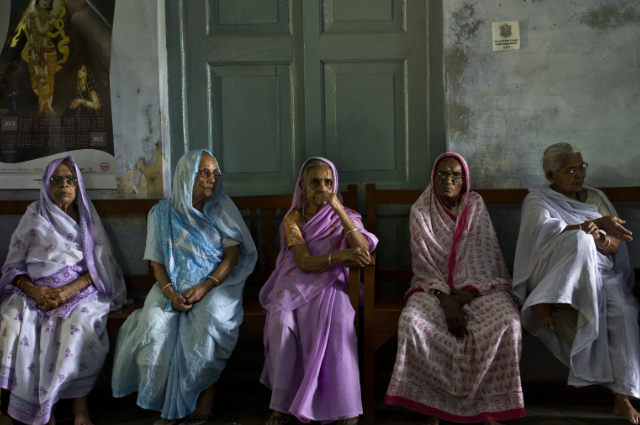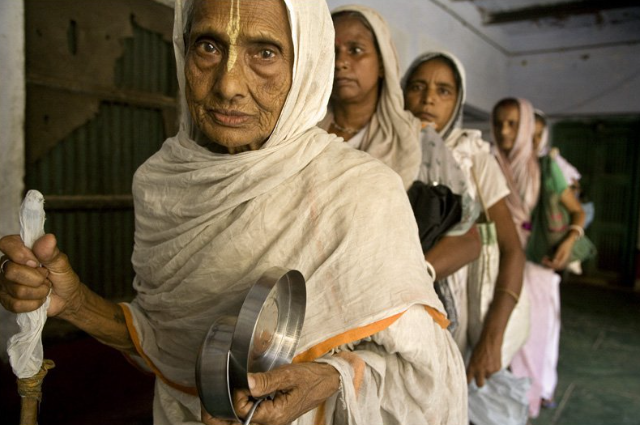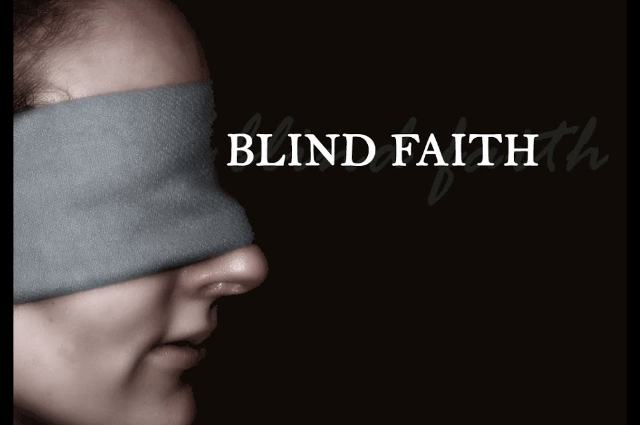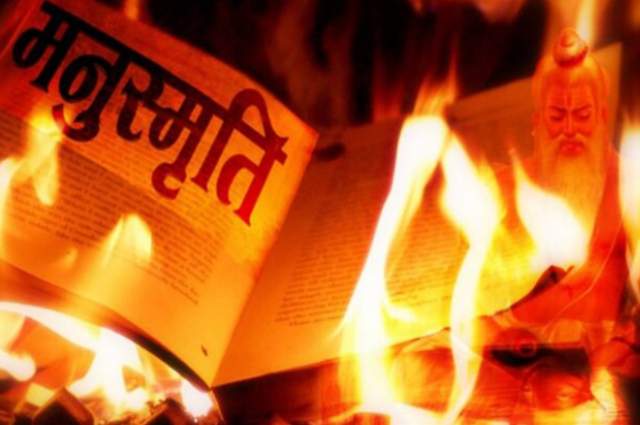
The cultural politics of extreme widowhood is patriarchy in remembrance and the evergrowing ideology that othered women still treat them as secondary subjects. It is a crime unpunished, and it is a crime socially accepted. No matter how capable or influential the feminine gender becomes, it can never equal the males or escape their gaze in certain cultural spheres.
LET'S TRY TO UNDERSTAND! Has it become the case of forward-looking discourse, or is it still an ideology successfully breathing its pre-life forms and has blossomed into a stagnant factor with a slight transition and without any commendable changes in our modern culture?
2023, a new year, a new beginning, yet blind faith prevails. And, We self-proclaimed free thinkers determined to practise freedom of speech seem to lose our social wings to the rules of patriarchy besides our progressive ideology. Luckily, we are accustomed to devising an argument for our divided consciousness and hyphenated psyche. Despite sustaining ourselves in the so-called enlightened global world and trying to adjust or rewind unhealthy patriarchal norms that degrade women's identity, we support the dominant discourse of extreme widowhood.
Many regions in the present society still favour widow practice. Be it India, Nigeria, Kenya, Nepal or Afghanistan, widows face severe discrimination and humiliation. The Loomba Foundation, a non-profit UN-accredited international NGO that helps widows and their children regardless of race, gender or religion, fights for widow justice and promotes understanding of the discourse through research while providing some disturbing but significant facts for widows around the world.
- The affected global population of widows numbers 258m widows with 585m children.
- Of these, 38m widows live in extreme poverty where basic needs are unmet.
- Since 2010, there has been a significant worsening in conflict areas in the Middle East and North Africa, notably the Syrian civil war.
- The worst affected by conflict are widows in Afghanistan, Iraq, South Sudan, Central African Republic and Syria.
- Widows in Western and developed countries have also been affected by cutbacks in social welfare and increased insecurity.
- Economic loss and property denial remain concerns for widows in counties like Angola, Bangladesh, Botswana, the Republic of Congo, India, Ghana, Kenya, Nigeria, Tanzania, Uganda, and Zimbabwe.
Extreme sociocultural rules bring alienation and misrepresentation into the widows' world causing discriminatory attributes towards their social setup. At the same time, it makes them vulnerable and subject to exploitation. Above mentioned key findings show that widows face forms of injustice and discrimination in all parts of the world. However, the nature and magnitude of the consequences of this injustice differ significantly among individuals and across nations.
A Personal Insight into the Practice: The Story of My Grandmother
Four years ago, I lost my Grandfather. It was a devastating phase for our entire family. Still, the incident bore no resemblance to the idea of grief that we were going through compared to one individual who never in her imagined world thought of experiencing this side of her fate till the last breath—My Grandmother.
Nothing in life can fill his void, and our family can never adjust themselves to bear the loss of their loving member. However, for our Grandmother, the damage was beyond repair. She married him at the young age of twelve, and her whole life revolved around him. My grandfather, too, became very fond of her because, being an orphan, he always dreamt of having someone to call a family. She proved a worthy candidate for this, whom he adored and was eager to submit his life to. Theirs was kind-of-love marriage because the only guardian that my grandfather had was his elder brother, and he married our grandmother without letting him know, bringing her into their household without informing him beforehand. During that time, their love story brought some indifferences between the two brothers for a few years. Despite that, for us grandchildren, it is a daring incident that we like to narrate with great pride and little amusement. However, eventually, everybody accepted their marriage, and together my grandparents lived, enjoyed and experienced every aspect of an ordinary life that most people imagine.
Moreover, my grandmother, like a traditional Indian woman, saw her reason for existence only through his eyes. She used to call him "Malik", which I believe was an admirable gesture and a way of showing her affection to compliment him as her guardian or protector.
Apart from the little ups and downs that life offers to an individual, the world seemed pretty fair to her until my grandfather's passing. Being married to her successful husband and having a great support system in her family and children, society respected her aura of womanhood which led her to maintain the heterogenous gender norms.
The changes occurred in her life when she no longer found him alongside. She didn't travel to any place for a year, didn't celebrate anything, and was at a complete loss. However, the change wasn't from our side because she was our priority, and keeping her happy became our family goal. The differences came from the patriarchal construct within the society—the superstructure of culture towards women that promotes the concept of extreme widowhood. I remember how she used to put this thought in her friend circle that she might have committed a severe sin so that her husband left her. Repeatedly, she used to question God and ask why this calamity befell her and beg him to take her instead of him.
In India, the scriptural laws concerning a female widow are extreme. The biased societal attitudes that they face are undeniable. When we compare or comprehend those rules, the only conclusion that arises from it is the continuous despair for women, which contrasts the Men. For Men, the rules and practices limit in this regard. Like other patriarchal norms, they don't become the victim; they aren't the product of disgust, God didn't disfavour them, and society doesn't scrutinise them. Yes, they become the subject who lost someone dear. Still, people allow them to heal and surrender to the cause of missing their partner without marginalising their masculine ambience.
We must ponder why society likes to hide from the opposite feminine gender. Why does even the modern population still practice widow myths? Why do some households still suggest those discriminations?
The concept of widowhood: symbols of patriarchy
Manusmriti, "The Dharma text of Manu," which became the most authoritative Hindu code, is the source of descriptive widow's rules in the present culture. Manusmriti, on widowhood, says a "widow in Hinduism is a single whose spouse has died or is gone missing for a while."
According to Manusmriti, a widow has three options — Punarvivah (Remarriage), Satvik Jeevan-yapan (leading simple life), and following Satipratha (burning herself on a pyre). A Remarriage is an option for a widow only if she is a virgin, leading a simple life i.e., Satvik Jeevan-yapan, after the husband's death concerns adhering to strict rules that she shall avoid during a year, like practising a widow-specific diet, discarding spirituous liquor, salt, and restraining herself from sleeping on the bed. Satipratha is closely related to the concept of Pativrata– an ideological apparatus in Hinduism of accepting one's husband as none other than God and trying to serve him in every possible way with complete devotion, even after his death, that is, by ascending the pyre.
In Hinduism, the social stigma attached towards Widow leans in a manner that it has become the most dreadful period in her life. Widowhood is considered a punishment for the sins she might have committed in her previous life. Becoming a widow makes you the sight of a pitiable object, an unblessed soul, the victim of social abuse, and eventually a solid subject of culture-specific hatred. Moreover, the biggest question that comes for a widow is the question of identity; the former glorified image of a dignified mother, wife or daughter gets translated into a cursed body which for society is a God's judgement, perfectly curated and stamped for her under his righteous gaze and solemn will. Therefore, she has the potential being who shall suffer to the extent that breaks her existence to its core while leaving her with an option to let herself oblige to the social structure, that is, to bind herself with an eternal doomed psyche while surviving in an atmosphere of constant fear, hatred and the harsh realisation of overflowing judgement or criticism.
Such broken identity degrades their self to identity in crisis; their conscious moulds into a space of continuous framing and negotiating to preserve its identity and eventually incubate itself to accept the negligence that casts a permanent shadow upon their reason of existence and from where there is no returning to her former female-self in the hegemonical social sphere.
The Tools of Feminism and Widowhood

Delving upon the history of widowhood teaches us that neither the tools of popular "isms" nor the other sovereign numerous revolutions that occurred since the dawn of civilisation brought any help within its discourse. Though, at present, the rules are not supposed to be that extreme, the percentage of suffering is much less compared to pre-independence days; still, we hear daily reports of torture experienced by widows through various media outlets.
The mass movement of feminism, too, couldn't provide a substitute for extreme widowhood. In addition, the practice of the culture is undivided by a thin line between opposite sexes. The result is women suffer their extremities while men escape its nuances. The rules females have to follow mark the singularity of patriarchy, which demeans their social, cultural, economic and political identity.
The Discarded or separated women!
These are the terminologies that we have created to define a widow's identity. The dumb and numb ideologies against their body make it difficult for us to acknowledge those humanistic rituals which have an eye for equality and has devised a million ways to promote the slogan of the overall well-being of every subject, either an active-breathing population or the non-living agents which also has the privilege to enjoy the right under various law of this planet.
Many years after the independence or coming of the constitution in different countries, these practices are still pertinent to specific sections of society, waiting to be changed or vanish. However, the present statistics indicate that the time is yet to arrive.
Widows and their World of Capital: Nothing like feminine power

Capitalism is a Capital, neither a heterogenic nor a misogynist nor an anti-feminist, but also nothing like an absolute feminine power!
The present world that grew under the umbrella of 'capitalism' or the 'right to freedom' didn't favour widowed women because capitalism doesn't care about women. Capitalism is the global world's career, the byproduct of infinite human possibilities based upon the producer-consumer ideology. Its alphabets are clear; the development-oriented goal with a complete industrialisation process driven by technology and suited for those who have the merit to embark upon its limitless growth without any scope for commercial void or a capital loss.
Hence, a widow–the marginalised, the secondary subjects, the rejected, the mute, the lonely figure deprived of efficient social, cultural or economic agencies cannot favour the evergrowing canvas of capitalism. These multi-dimensional defining elements in the life of a widow make them an unrewarding subject in the capitalistic world. The capital only promotes corporate, successful, independent, techno-female subjects and does not like touching widowhood's animated particulars.
The modern bourgeoisie or proletariat practised widowhood and tried to 'Other' them like a secondary self while marginalising their feminine presence to borderline their identity and cast them as a group unfit for leading an ordinary social life. This disturbing notion became prominent when people started practising patriarchal scribbles in various religious scriptures, which became the set norms for widows. This careless knowledge against widows still holds great significance in deciding their "life rules and roles" while ordering them to embrace their "state of suffering" because it happened with God's knowledge. Therefore, she is no longer bound to search for her "state of happiness" and should live in her sorrow, silence and despair until her last breath.
Although capitalism is human-centric, but, in the case of unguaranteed economic agencies like widows, it too has adjusted itself and developed its branches to follow the discourse on discrimination where it likes to neglect female subjects who are unlike the capitalistic characteristics and entirely unable to multiply the socio-economic traits of capital and its world.
How the blind faith progresses: Widowhood and the Role of the female voice

The central dogma against separated females popularised in society's discourse corrupts and brainwashes widows to a level where it becomes hard to distinguish the parallelisms between womanhood and widowhood in common understanding. The favouring and disfavouring equilibrium, the ifs and buts between their relationship, embracing womanhood and widowhood together, brings the feminine resolution significantly towards the women's sufferings.
Unfortunately, in its flourishing, Women have an important saying; they worship the prejudiced self-regulatory notion considering it as their widow right while living as illusioned bodies, suppressing and rejecting to utilise their just consciousness so that they can follow their pativrata dharma until their last birth.
Society understands, family understand, and even individual women that go through this phase understand the discrimination. Still, their blind faith and their solemn duty prevail. Their just or unjust judgement makes them follow the bandwagon of patriarchy.
The death of a husband symbolises the loss of a guardian in agency-less women; not only is it a psychological trauma for them, but it is also a course of social, cultural and economic loss. In addition, without those life-sustaining factors, they automatically tend to suffocate under the heavy burdens of leading an everyday life and become active victims of abuse. These underpinnings of a layered psyche with many uncertainties make them accept the cursed status and prepare their blind faith in extreme widowhood.
Thus, for a widow, their existence is both the cause and effect when viewed from the perspective of blind faith progress.
There are some stages in the flourishing of this blind faith in widowed women: the loss of a male provider, the extreme mourning rituals for a year adding emotional stress, followed by the customs of a daily routine for the rest of life becomes a repeated reminder of the husband's death. These stringent steps make them uphold the reverse psyche, pushing her to accept the consequences and riding her belief towards blind faith.
Existing as a widow is to showcase a full-fledged suppressed female subject who has to start practising those extremities without complaining. In traditional Hindu settings, its laws are even exaggerated. Widows must oblige to certain customs in which they are expected to spend a life of severe austerity devoid of any 'indulgences' like colourful clothes, ornaments and makeup and even their diet pattern shifts. They should strictly adhere to simple meals devoid of spices due to the belief that the intake of herbs exacerbates sexual desires. In many Hindu households, widowed women either have separate kitchens to cook or their food is prepared after it has been cooked for the other family members.
Moreover, in several regions of the country, shaving the head of the widow is a common practice. These troubling measures have become popular because society thinks that desexualising the widow's body can prevent itself from many social evils and can portray the ideal women figure in their patriarchal setup where the feminine halves are marked to defend the family values and regarded as a symbol of sacrifice, ready to let go their desire, willing to second themselves and even inclined to burn their bodies. After all, everything seems more important than her—Her community, lineage, entire identity and even her existence—She is simply an insignificant being, without any say, like a puppetry showpiece, and that's only her asset.
Widowhood is liberty denied
The obvious question now becomes, How can we touch the widow's consciousness or investigate their language of reality? With what credit do their separated bodies gain their autonomy to live?
The widow project, after all, is to reassemble the development of the neglected consciousness. It is to cancel the planned patriarchy that upsets their soul and precisely poke its prejudices while scaring their psychology.
Generally, the notion of the feminine in a similar fashion within a specific culture has forever been secondary. However, in the case of a female widow, its border becomes more extensive and the gap even higher. The figure of 'woman' is an issue in patriarchy, whose minimal prediction is undefined and was made available to the common masses. Therefore, the convention of extreme widowhood raises questions about ancient approaches and confirms how corrupt the practice is.
For widowed women, the relationship between nonobjective culture and silence suffering by themselves across race, class, and caste is predominant. Moreover, their differences are hegemonised so concretely that not even women, the sole victims in this practice, doubt its bearings. They never confront the undenied mistreatment or impossibility of such values. Their consciousness is checked to the limit, and their rationality becomes impaired. The change of level in their consciousness gets so rich that they willingly surrender to its course of action.
Consequently, widowhood becomes a defect in society that gets popularised as gender violence or possibly an identity crash for those individuals who have to go through it. Within a distinctive culture, its track result in sexual discrepancy and affect the population. For widowed women, participation in those practices sounds more pressing. For them, the ground rules of the sexual division are evidence of snatching away the right to feel or act free. It is denying them their right to share the human privilege to live.
It is true that contemporary society sustains a progressive mindset and has seen some substantial ideological construction regarding gender-related details. In contrast, keeping the male dominant in the practice of widowhood is still the norm. Hence, the female story in this practice is yet to be born to bear fruit.
The context of the traditional belief to locate women as an item of display in the rigid framework of this practice makes their individuality a joke; it erases their best narrative of being human. For the human is to stand alive, realise the consciousness, and most importantly, feel liberated. This element loses its every colour in the life of a widow; for them, it's always dark like black or plain like white, not even holding shades of grey.
Getting along in the labyrinth of widowhood
Revolution happens within hundred years and barely in ordinary life. Are we awaiting that while making ourselves bourgeoise in disbelief?... the why and how?
What could be done, and how will it happen? The simple-sounding question but with a complex application is the central resolution in the case of extreme widowhood.
Many specialists and strategists of this discourse may say that articulation to make the widow seen or visible should be rendered across cultures; the previous tools should be assessed, compared or contrasted to the current notions.
Thankfully, this wisdom has existed in our society for the last three or four decades. There are active widow protection laws negotiated in the parliament, and they have become a constitutional right. Clearly, these laws have merit and are capable of eliminating the sufferings of a widow:
- Provide access to education and training programs to enable widows to acquire skills that would help them generate income and gain employment.
- Create job opportunities in both the public and private sectors, including options for self-employment, to empower widows and help them become financially independent.
- Develop and enforce laws that prohibit discrimination against widows and ensure that they have equal access to education, healthcare, and other social services.
- Encourage social and cultural change through education and awareness campaigns to challenge harmful stereotypes and prejudices about widows and their societal role.
- Offer psychological and emotional support to help widows overcome the trauma of losing a spouse and cope with the challenges of raising children alone.
- Establish social safety nets, such as pension schemes, housing subsidies, and health insurance, to support widows and their families financially.
- Engage with community and religious leaders to promote gender equality and combat the stigma and discrimination faced by widows in their communities.
- Provide legal assistance to widows to help them access their rightful inheritance and property rights.
- Promote women's leadership and participation in decision-making to ensure that widows' perspectives and needs are considered.
- Establish a platform for widows to share their experiences, support each other, and advocate for their rights.
Regardless of these laws, widows still face discrimination because laws only work in court and are only documentation. To be relished in a society, it needs people to follow it. Its outcome is only possible when mindset changes, or shifts happen across culture and space.
There is a need to alter the prejudiced conceptions towards widows; only then their good story could be preached or practised with a good backdrop. Let us hope it comes sooner than we thought.

